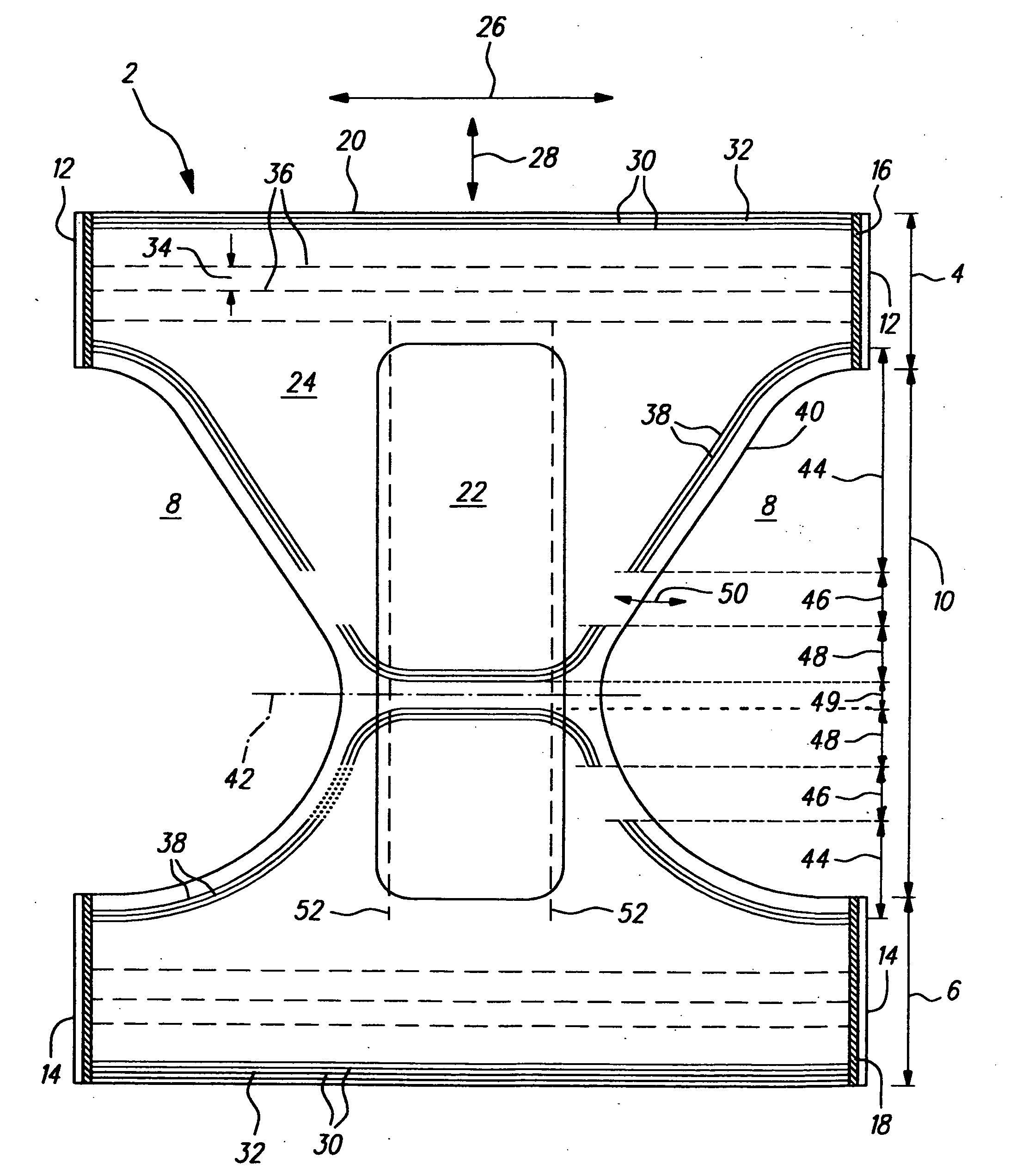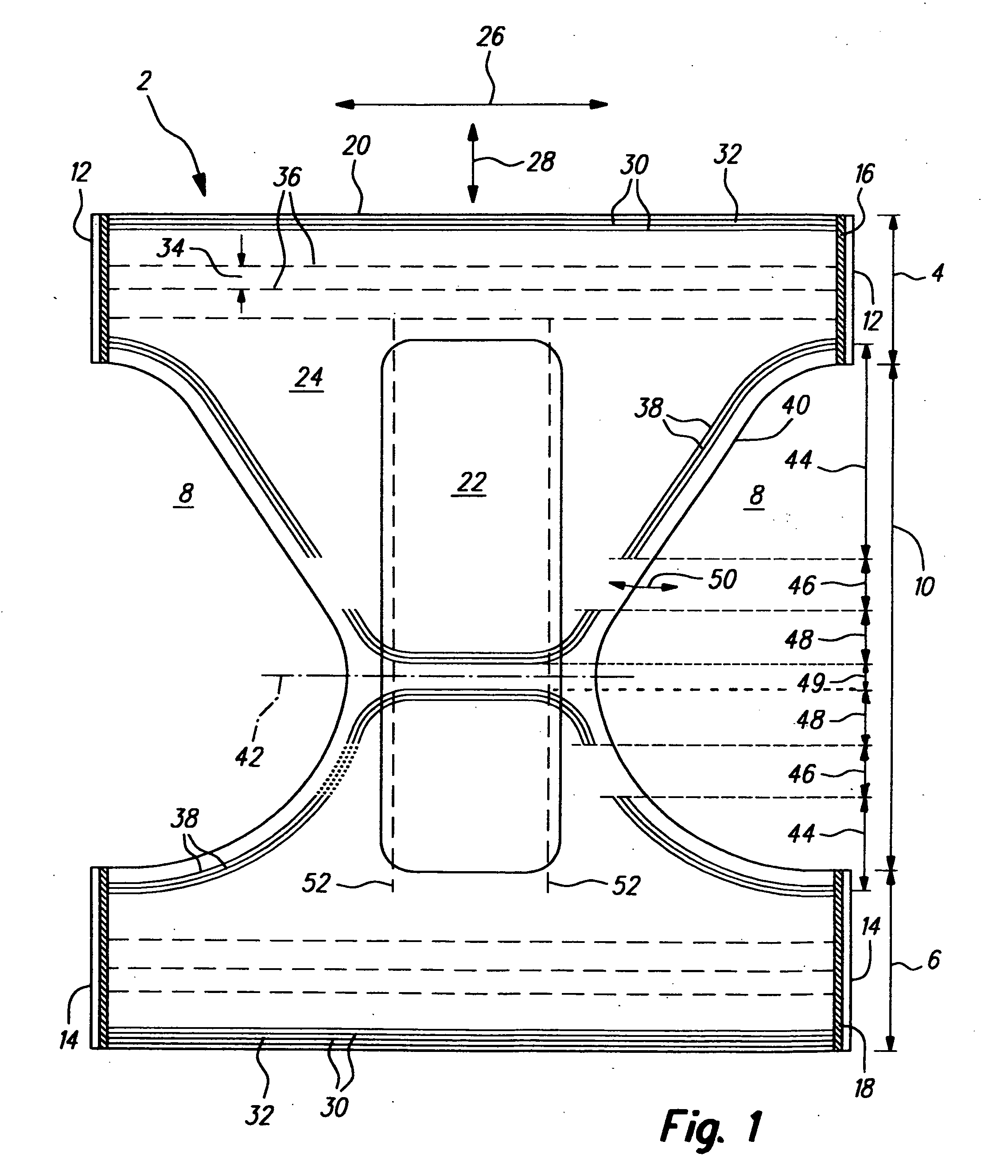Pants-type disposable absorbent hygiene article
- Summary
- Abstract
- Description
- Claims
- Application Information
AI Technical Summary
Benefits of technology
Problems solved by technology
Method used
Image
Examples
Embodiment Construction
[0025]FIG. 1 shows a hygiene article, designated in total with reference numeral 2, in the form of a pants-type diaper (“pants”) in the flat state before being connected at the longitudinal side edge sections at the manufacturing plant. The hygiene article comprises a rear part 4, a front part 6, and an intermediate crotch part 10 delimiting the future leg openings 8. In the flat state, the rear part 4 is delimited by longitudinal side edges 12 and the front part 6 is delimited by longitudinal side edges 14. These are connected to each other in the area of the hatched zones 16 and 18 to form the pants shape, i.e. through hot sealing or other conventional joining methods. In this fashion, two side seam areas of the hygiene article are formed which cannot be released without causing damage. The readily configured hygiene article may have a breaking line, e.g. in the form of a release thread, in particular, along these side seam areas so that the hygiene article can be opened in the ap...
PUM
 Login to View More
Login to View More Abstract
Description
Claims
Application Information
 Login to View More
Login to View More - R&D
- Intellectual Property
- Life Sciences
- Materials
- Tech Scout
- Unparalleled Data Quality
- Higher Quality Content
- 60% Fewer Hallucinations
Browse by: Latest US Patents, China's latest patents, Technical Efficacy Thesaurus, Application Domain, Technology Topic, Popular Technical Reports.
© 2025 PatSnap. All rights reserved.Legal|Privacy policy|Modern Slavery Act Transparency Statement|Sitemap|About US| Contact US: help@patsnap.com



